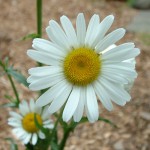 In a previous post Anatomy of a Flower, I explained what the basic structure of a flower is. In this post, I introduce a variation on this basic plan, the daisy. The typical shape of a daisy is that of a wheel, where the spokes are represented by the petals. The structural distinctiveness of the daisy is in the hub of the wheel, which actually consists of many minute flowers all crowded together into one place. This flowering structure is the defining characteristic of a very large family of plant species traditionally called the Compositae, which includes many plants important to the gardens and landscapes of Delaware County.
In a previous post Anatomy of a Flower, I explained what the basic structure of a flower is. In this post, I introduce a variation on this basic plan, the daisy. The typical shape of a daisy is that of a wheel, where the spokes are represented by the petals. The structural distinctiveness of the daisy is in the hub of the wheel, which actually consists of many minute flowers all crowded together into one place. This flowering structure is the defining characteristic of a very large family of plant species traditionally called the Compositae, which includes many plants important to the gardens and landscapes of Delaware County.
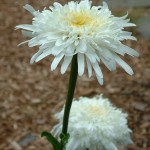 Leucanthemum is a group of species (a genus) which is blooming right now in Delaware County. Above is pictured the Oxeye Daisy (Leucanthemum vulgare) a native of Eurasian grasslands which has escaped from North American gardens to become naturalized in fields and along roadsides. It has a typical wild daisy form. To the right is pictured a modern garden version of Leucanthemum, the variety ‘Ice Star’, where it is evident that the plant breeders have highly modified the original daisy form.
Leucanthemum is a group of species (a genus) which is blooming right now in Delaware County. Above is pictured the Oxeye Daisy (Leucanthemum vulgare) a native of Eurasian grasslands which has escaped from North American gardens to become naturalized in fields and along roadsides. It has a typical wild daisy form. To the right is pictured a modern garden version of Leucanthemum, the variety ‘Ice Star’, where it is evident that the plant breeders have highly modified the original daisy form.
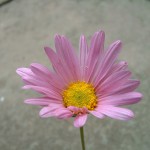 Another closely related group of species of great importance to fall gardens in Delaware County is the genus Chrysanthemum. Most familiar are the pots of mums available for sale in the fall at the local greenhouse or supermarket. But there are also several varieties which are very happy planted as perennials in the garden. Pictured to the left is an heirloom variety of Chrysanthemum just beginning to bloom now here in
Another closely related group of species of great importance to fall gardens in Delaware County is the genus Chrysanthemum. Most familiar are the pots of mums available for sale in the fall at the local greenhouse or supermarket. But there are also several varieties which are very happy planted as perennials in the garden. Pictured to the left is an heirloom variety of Chrysanthemum just beginning to bloom now here in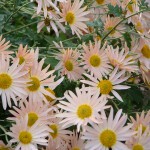 Delaware County. Pictured to the right is Chrysanthemum‘Clara Curtis’ which usually doesn’t bloom here till late in September. Both of these varieties show the typical daisy shape.
Delaware County. Pictured to the right is Chrysanthemum‘Clara Curtis’ which usually doesn’t bloom here till late in September. Both of these varieties show the typical daisy shape.
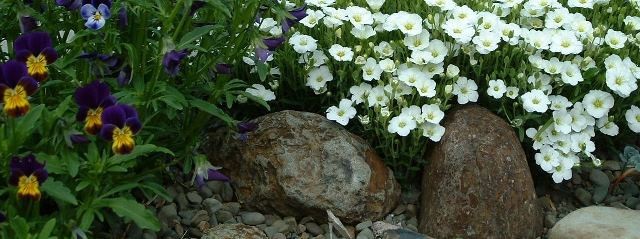



It’s fascinating to learn about the different types of daisies and how they play a role in the gardens and landscapes of Delaware County! 🌼 I had no idea that the hub of a daisy actually consists of many tiny flowers packed together. Seeing the variations like the Oxeye Daisy and the modern garden version ‘Ice Star’ really highlights how plant breeders have modified these beautiful flowers. I wonder what other unique plant species are native to our area and how they contribute to our local ecosystem? 🌱